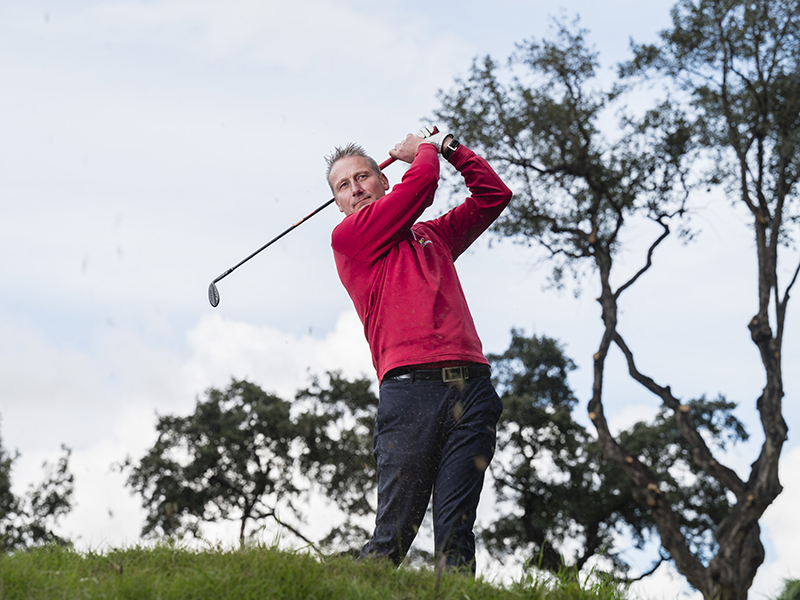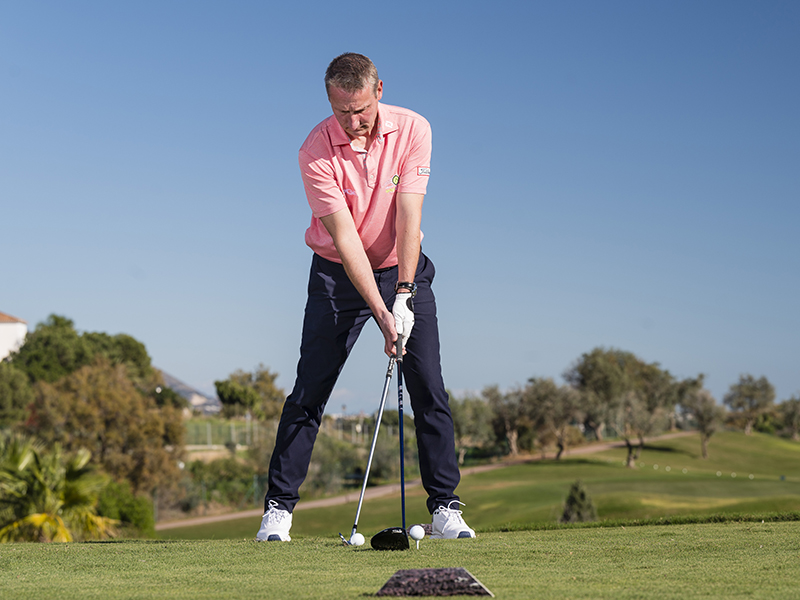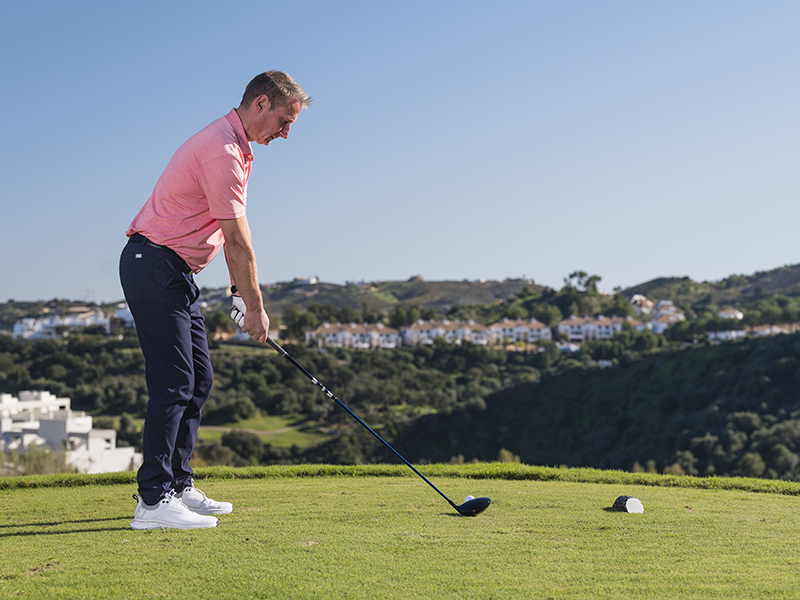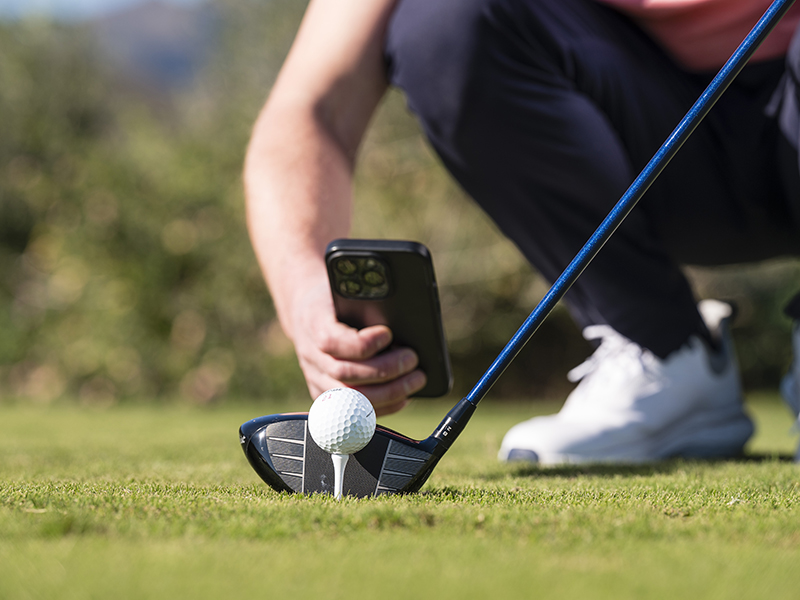Driver Setup Position: Use These 5 Fundamental Checkpoints To Hit Your Best Ever Tee Shots
The driver setup position heavily influences our chance of success later in the swing, so improving your fundamentals is crucial to hitting powerful drives...


Anders Mankert
With a huge premium on hitting long and powerful tee shots, the driver setup position is one of the most crucial elements in learning how to hit a driver.
This fundamental aspect is sometimes neglected by amateurs, so spending some time bedding in good habits at the range could help you to unlock your best ever tee shots and get ahead of the competition.
These setup factors are also pretty universal, applying to players of all ability levels. So, whether you are a newbie looking for beginner golf tips or an established club member, these tips will certainly help you to tidy up your tee shots.
In this article, PGA Master Professional and Golf Monthly Top 50 Coach Anders Mankert shares his step-by-step guide to master the driver setup position...
What Does 'Driver Setup' Mean?

Anders Mankert is the owner and head professional at Leicester Golf Centre, with a coaching career spanning more than 28 years.
In 2024, Anders received the title of Master PGA Professional - becoming only the 65th person in history to be awarded that accolade. His vast coaching experience has transformed the golf swing of many amateurs and professionals, while also striving to grow the game through his revolutionary work at Leicester Golf Centre.
The driver setup, sometimes referred to as the driver address position, is essentially the way in which you stand to the ball when preparing to hit a driver. It's the first stage of the plan, and is just as important for a beginner looking for driver tips as it is for a low-handicap player looking to get their game ready for the new season.
There are many components that go into this essential stage of the golf swing, each of which will have an impact on that stages that follow - including the driver backswing, downswing and impact position.
There are many benefits to improving this fundamental position, including effectively generating and unleashing power, or creating the correct attack angle at impact to increase your distance and accuracy.
Subscribe to the Golf Monthly newsletter to stay up to date with all the latest tour news, equipment news, reviews, head-to-heads and buyer’s guides from our team of experienced experts.
Misconceptions
Modern golf equipment doesn't need to be hit up anywhere near as much as many amateurs think, and in fact the top players in the world actually hit marginally down on the golf ball at impact with driver.
According to the latest Trackman data, the average PGA Tour pro has an attack angle of -0.9 degrees, dispelling the popular myth around hitting hugely up at impact.
The beauty of modern equipment is that all the loft is already built in to help you achieve those huge drives, so focusing on some of the other factors below is perhaps a better way to improve your performance off the tee.
Updated PGA Tour Averages released by @TrackManGolf It’s been a while since they have released updated CHS, distances, AOA, launch angles etcBookmark for future reference and see how you compare 👊🏼 pic.twitter.com/iyySMw41xZMay 2, 2024
The Driver Setup Position
1. Ball Position
Many amateur golfers think about ball position in relation to your front foot when hitting driver, but instead I want you to think about it in relation to your sternum. This is because your low point is below your sternum, and therefore this is a much better guide than your feet.
The perfect ball position for driver is just forward of sternum, below the left armpit (for right-handed golfers). This will allow you to hit fractionally up on the golf ball, as the ball position is forward of your low point.
It's important when focusing on the driver setup, particularly around ball position, not to lean back at address. This will cause your low point to shift onto your back foot, causing the club to bottom out well before the ball.

Anders demonstrating ball position with driver in relation to the ball position with a wedge or an iron...
2. Stance Width
It's important when hitting our longest club, and hopefully our most powerful shots, to ensure you have a stable base to start from. The correct stance with driver is to have your feet at shoulder width or wider, giving you plenty of stability as your coil up and store all that power in the backswing.
3. Weight Distribution
Unlike hitting a wedge around the green, which is much more a delicate 'feel' shot, you want the weight distribution with driver to be about 50/50 on each foot. That means you shouldn't feel as though you are feeling more pressure on one side in comparison to the other, further adding to that stable base that is required for powerful tee shots.
4. Hand Position
When hitting a driver, your hands on the grip of the club are slightly out in front of you rather than hanging straight down. A good reference point for the hands would be under your nose, which would be clear to see if you took a photo of yourself at address from a down the line position (as in image below).

The hands should sit just below your nose at setup with driver
5. Tee Height
Tee height plays a pivotal role in the launch and trajectory of your shots with driver, but many amateur golfers simply plonk their peg in the ground and set about plotting how to smash the ball as far as they can.
If the ball is teed up too high, this encourages you to lean back and inadvertently shift your low point - causing a variety of common faults such as skying your driver.
If you are hitting the ball slightly up, you want approximately half the golf ball to sit above the top of the clubface. You can the camera on your phone to take a photo from low down behind the ball, which will show you how much of the ball is visible from behind the clubhead.

Take a photo from behind when practicing on the range or on the course, and see whether you have teed the ball up to the correct height
What loft should I use on my driver?
A: When considering which loft of driver you should use, it's important to first understand your swing speed. If you swing the club faster than the average amateur, you will want to go for a lower lofted driver.
If you swing the club a little slower, you instead should opt for a higher lofted driver. Modern equipment now allows you to adapt the loft on your driver, so you can modify this as your game changes and develops.
What are the most forgiving drivers?
The most forgiving drivers are a lifesaver for those who struggle with their tee shots, but many high-handicap golfers would benefit from a little more forgiveness.
These clubs allow you to maintain distance and accuracy, even if the you aren't necessarily always striking it out of the middle of the clubface. All the big manufacturers develop clubs such as these to help amateur golfers play their best golf, and we have a number of great options in our handy guide on the most forgiving drivers - which are tested by experts who can offer you trusted advice before you buy.

Baz joined Golf Monthly in January 2024, and now leads the instruction section across all platforms - including print and digital. Working closely with Golf Monthly's Top 50 Coaches, he aims to curate and share useful tips on every aspect of the game - helping amateurs of all abilities to play better golf. Baz also contributes weekly to the features section, sharing his thoughts on the game we love and the topics that matter most. A member at Sand Moor Golf Club in Leeds, he looks forward to getting out on the course at least once a week in the pursuit of a respectable handicap.
Baz is currently playing:
Driver: Benross Delta XT
3-Wood: Benross Delta XT
Hybrid: TaylorMade Stealth 4 Hybrid
Irons: Benross Delta XT 5-PW
Wedges: TaylorMade RAC 60, Callaway Jaws MD5 54
Putter: TaylorMade Spider Tour
- Anders MankertMaster PGA Professional and Golf Monthly Top 50 Coach